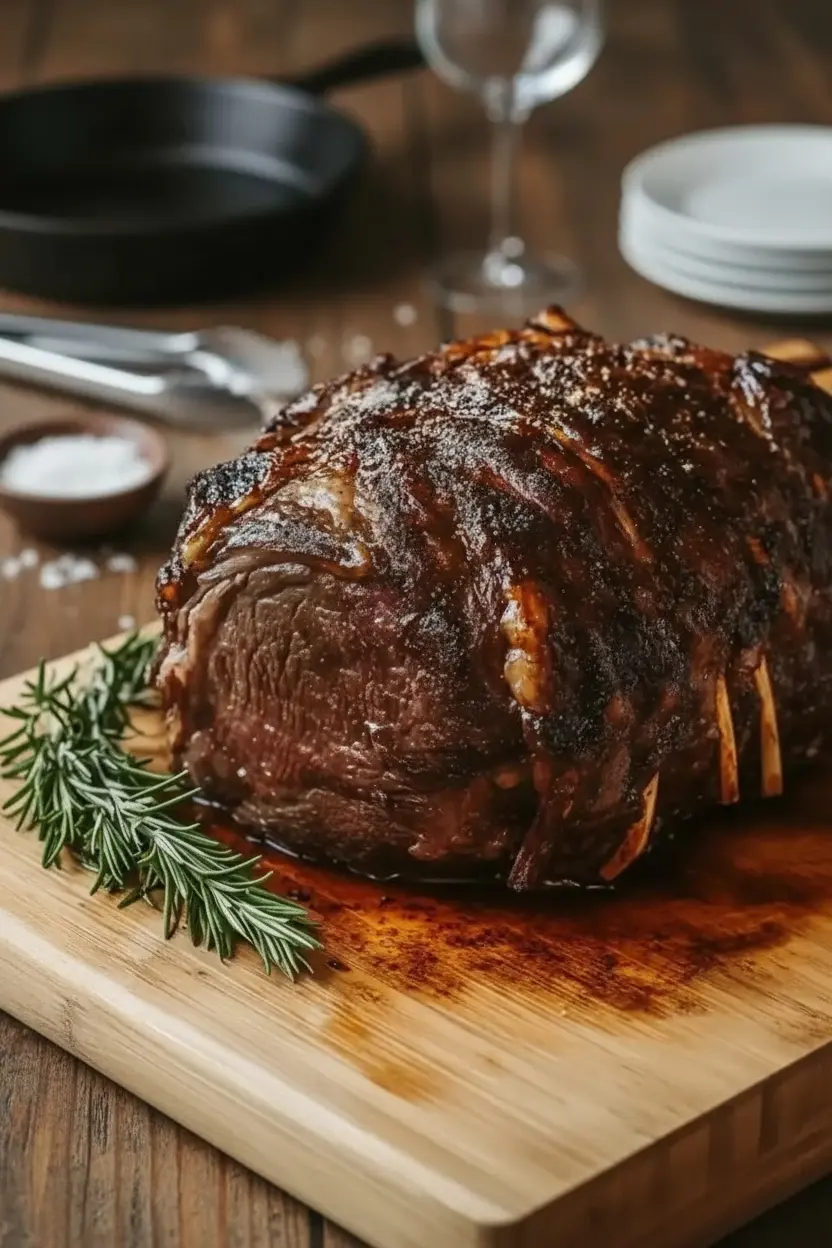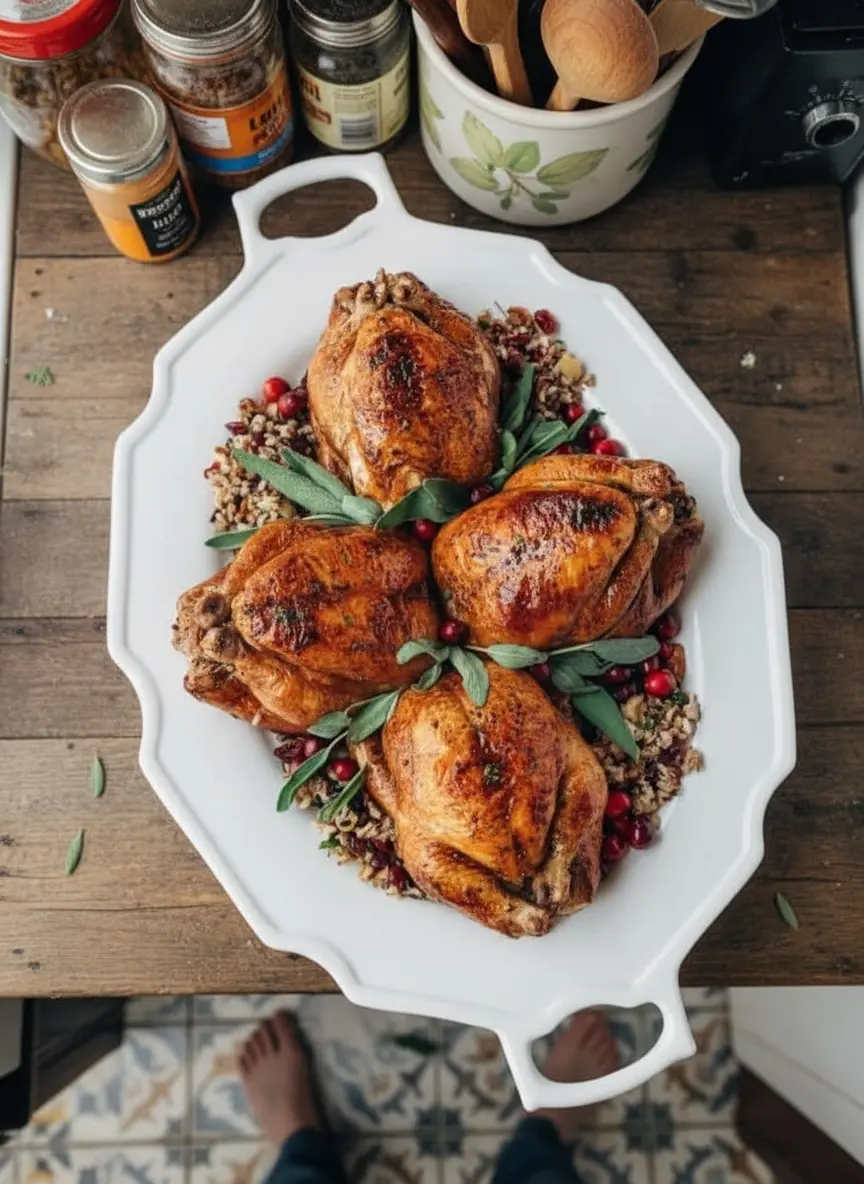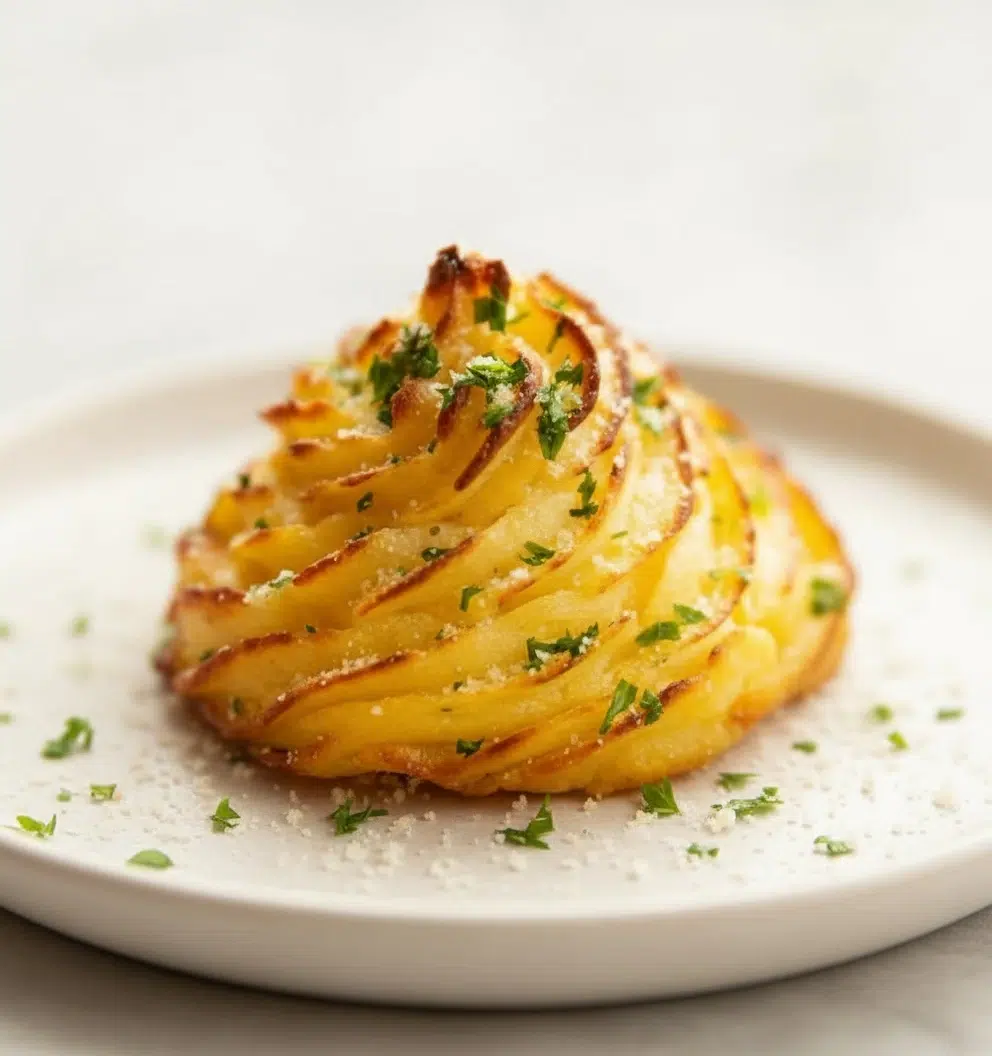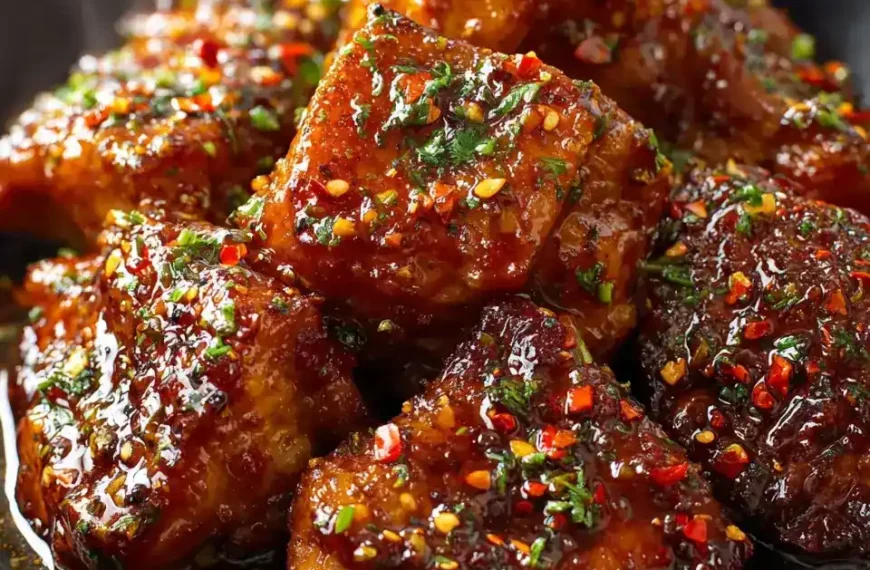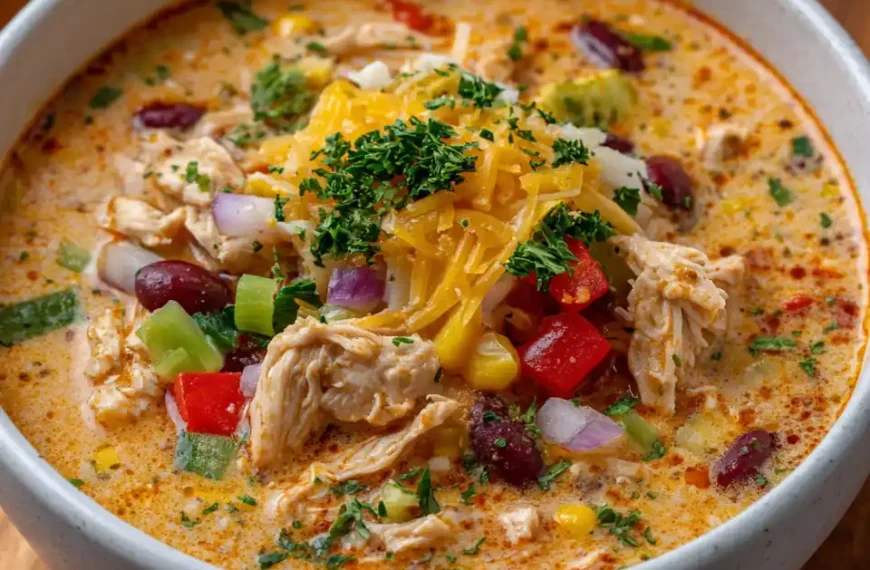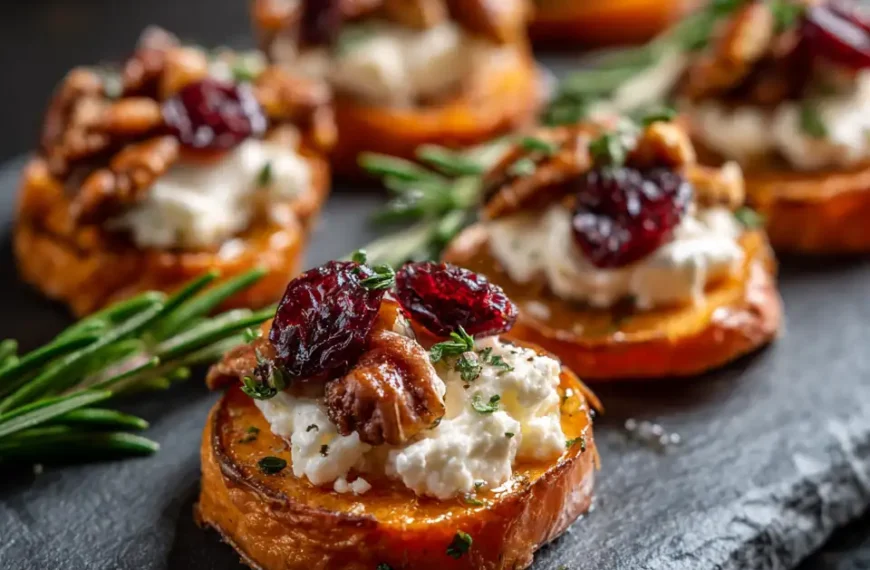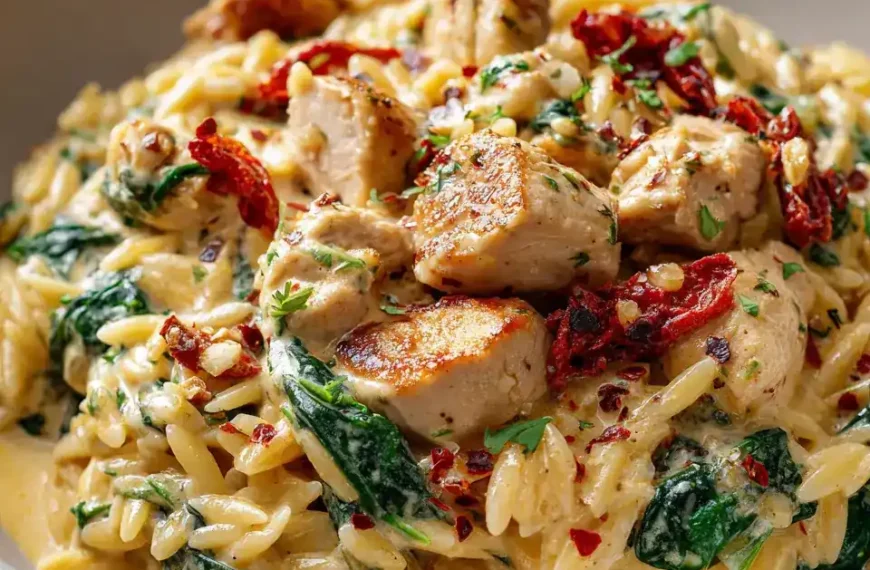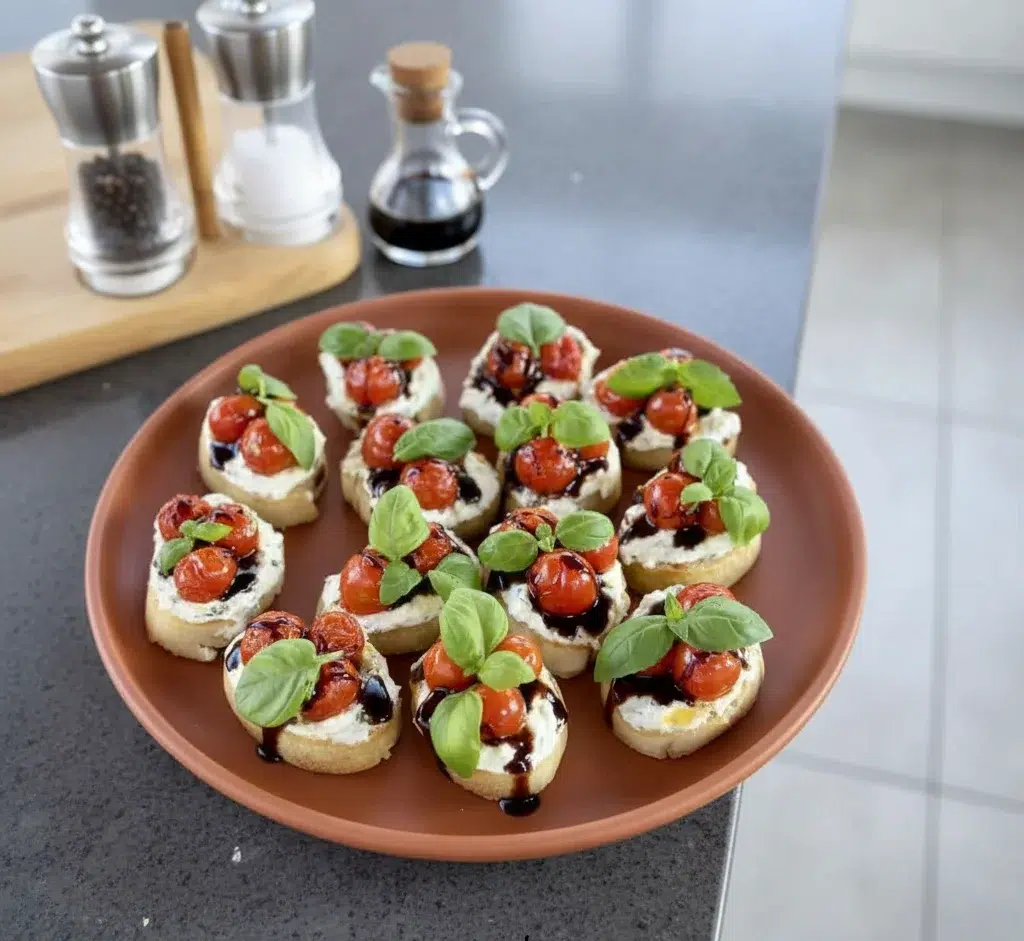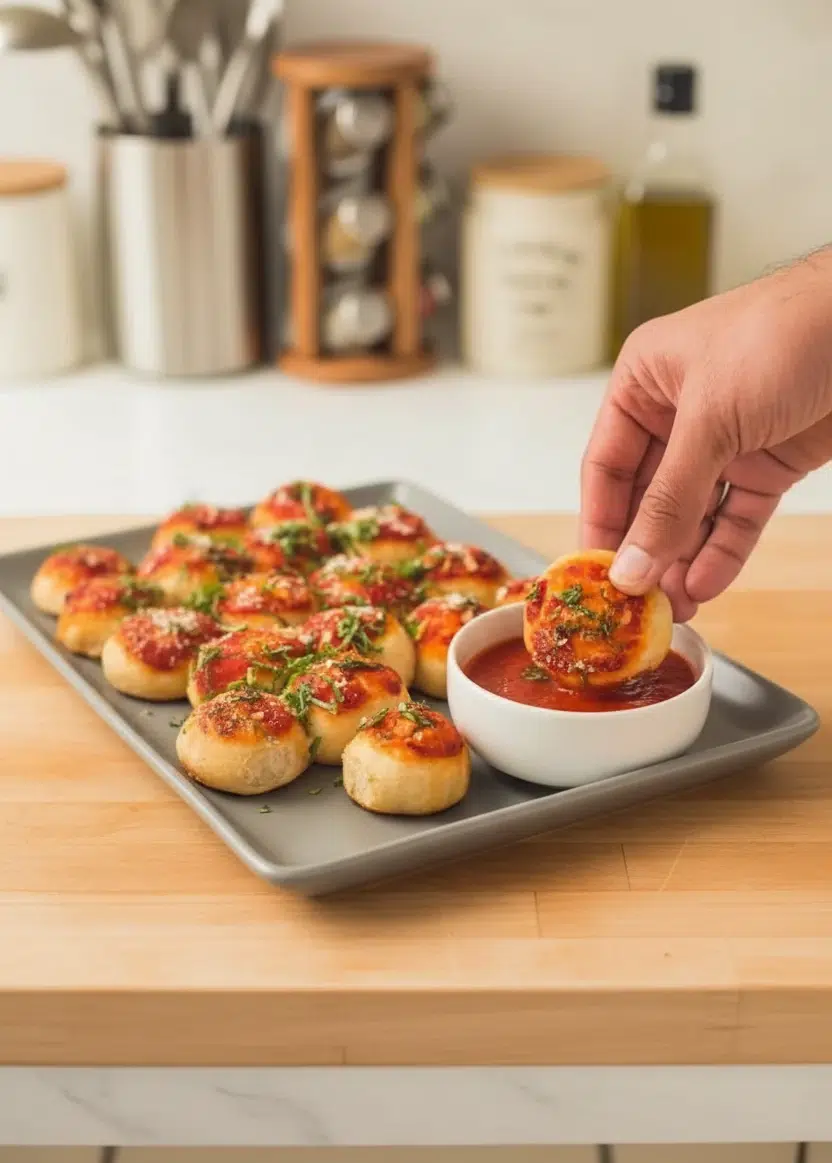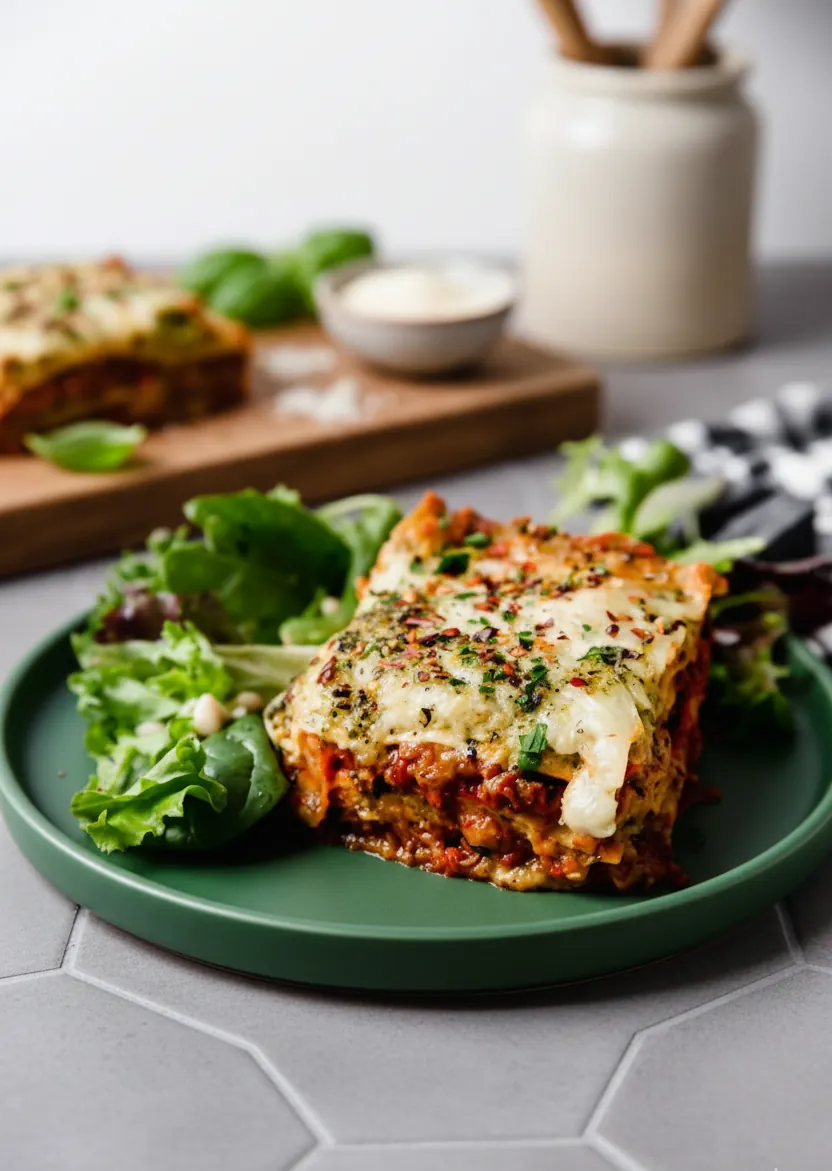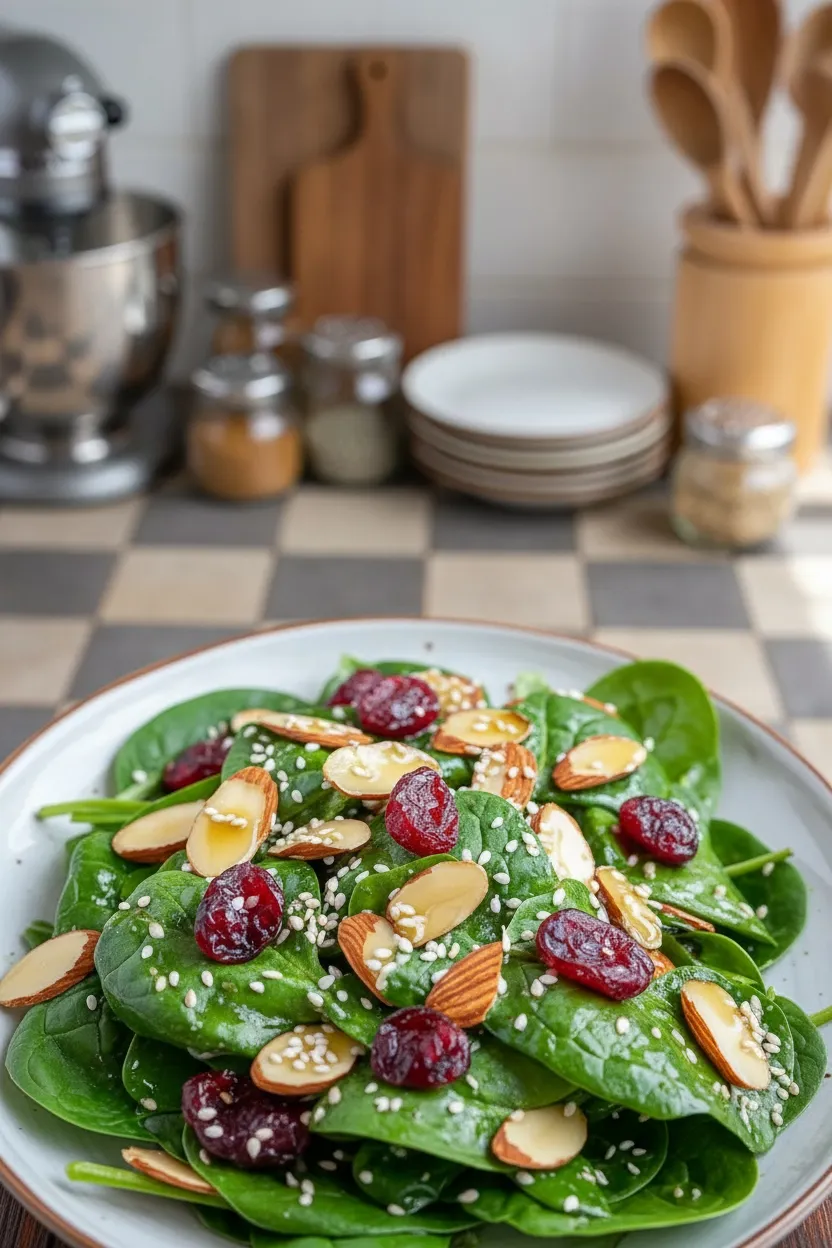Classic Christmas Prime Rib: The Story & Intro
There’s something truly special about Classic Christmas Prime Rib that brings everyone to the table in joyful anticipation. It’s not just a meal; it’s a tradition that fills homes with rich aromas and festive warmth. Many recall the first time they sliced into a juicy, perfectly roasted prime rib, creating a moment that felt both luxurious and heartfelt. This dish stands out on holiday menus because of its tender, flavorful meat and the savory au jus that accompanies it. Whether you’re hosting a large family dinner or an intimate gathering, Classic Christmas Prime Rib never fails to impress and satisfy.
Dry brining the roast overnight is a game-changer, locking in seasoning and deepening flavor, a critical step spoken about by chefs everywhere. The slow roasting at low temperatures makes the meat juicy and tender, a delicate process remembered by many who bake this dish each year. This recipe guides you through every step—from preparing the prime rib, browning the bones for an unforgettable broth, to the perfect resting time that ensures juicy slices every time. You’ll also learn to prepare a tangy, creamy horseradish sauce that complements the roast, adding a festive zing to your Christmas feast. Classic Christmas Prime Rib is more than food; it’s a celebration of flavor and family, and this guide will help you create that magic in your own kitchen. This article will keep the keyword Classic Christmas Prime Rib naturally flowing for both beginners and seasoned cooks alike, ensuring your holiday roast turns out spectacularly every time.
Classic Christmas Prime Rib: Preparing the Perfect Prime Rib Roast
Preparing the perfect Classic Christmas Prime Rib starts with selecting a high-quality 6-pound prime rib or beef rib roast. The key to unlocking robust flavors lies in the dry brining process. Applying about 30 grams of kosher salt evenly over the roast at least 24 hours before cooking allows the salt to penetrate deeply, enhancing the meat’s natural taste. Removing the rib bones and tying them back aids in even cooking, ensuring that every bite is juicy and tender. Letting the roast rest at room temperature for 5-6 hours before roasting helps achieve consistent heat distribution throughout the meat, essential for that perfect crust and pink interior.
Cooking the prime rib at a low temperature of 250°F (120°C) for about three hours, or until it reaches an ideal internal temperature of 115°F for rare or 120°F for medium-rare, guarantees that tenderness and moisture remain intact. Using a meat thermometer is crucial to monitor the roast’s progress accurately. After roasting, covering the meat lightly with foil and letting it rest for 20-30 minutes allows the juices to redistribute throughout, making each slice flavorful and moist. This technique, combined with the dry brining and slow roasting, is a must-know for anyone wanting to serve impeccable Classic Christmas Prime Rib on their holiday table.
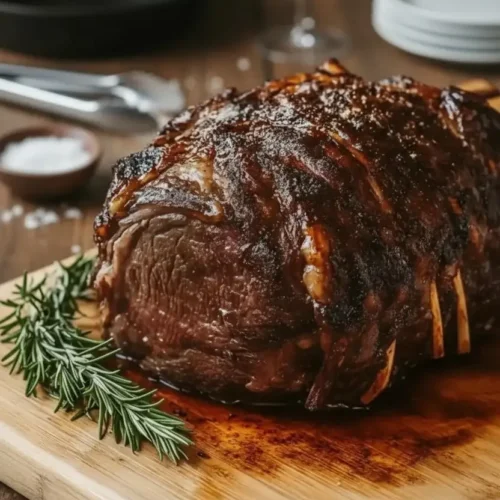
Classic Christmas Prime Rib
Ingredients
- 6- pound 2800g prime rib or beef rib roast
- 3 tablespoons 30g diamond kosher salt or 2 tablespoons (30g) morton’s kosher salt
- 1 tablespoon 6g coarse black pepper
- 3 tablespoons 40g olive oil
- 3 pounds 1360g oxtails, neck bones, or meaty beef bones
- 1 teaspoon beef base
- 6 cups low-sodium beef stock
- 1/2 cup 120g dry red wine
- 5 cloves garlic
- 2 large carrots chopped
- 3 ribs celery chopped
- 1 large onion chopped
- 1 tablespoon 13g tomato paste
- 2 sprigs thyme
- 1 large bay leaf
- Salt and pepper to taste
- 1 cup sour cream
- 5 tablespoons prepared horseradish
- 1 tablespoon dijon mustard
- 2 teaspoons worcestershire sauce
- 2 tablespoons mayonnaise
Instructions
- Step 1: Prepare the Prime Rib Roast
- Begin by preparing a 6-pound prime rib roast.
- Season it with 30 grams of kosher salt, which is about 1% of the meat’s weight, at least 24 hours in advance to enhance its flavor.
- This dry brining process will ensure a well-seasoned roast.
- On the day of cooking, preheat your oven to 250°F (120°C) and adjust the oven rack to a low position to accommodate the roast.
- Remove the rib bones from the roast and tie them back onto the meat, which will help in even cooking.
- Allow the roast to sit at room temperature for 5 to 6 hours before cooking for more even heat distribution during roasting.
- Step 2: Brown Bones and Prepare Broth
- In a large pot, heat 3 tablespoons of olive oil over medium heat.
- Add 3 pounds of meaty bones, such as oxtails or neck bones, to the pot.
- Brown them on all sides for approximately 10-12 minutes to develop a rich flavor.
- Then, add 5 cloves of garlic, 2 large chopped carrots, 3 chopped ribs of celery, and 1 chopped onion to the pot, stirring to combine.
- Stir in 1 tablespoon of tomato paste and cook for an additional 10 minutes to deepen the color and flavor.
- Step 3: Deglaze and Simmer the Broth
- Pour in 1/2 cup of dry red wine and scrape the bottom of the pot to deglaze any browned bits.
- Add 6 cups of low-sodium beef stock and bring the mixture to a boil.
- Once boiling, reduce the heat to a simmer and add 2 sprigs of thyme and 1 bay leaf.
- Let this mixture simmer uncovered for the duration of the roast’s cooking time to develop a flavorful au jus.
- Step 4: Roast the Prime Rib
- Insert a meat thermometer into the center of the roast to monitor its internal temperature.
- Place the roast in the preheated oven and cook for approximately 3 hours, or until it reaches an internal temperature of 115°F for rare or 120°F for medium-rare.
- Once the desired temperature is achieved, remove the roast from the oven and tent it with foil.
- Allow it to rest for 20-30 minutes, which will help in redistributing the juices throughout the meat.
- Step 5: Prepare Horseradish Sauce
- While the roast is resting, prepare the horseradish sauce.
- In a bowl, combine 1 cup of sour cream, 5 tablespoons of prepared horseradish, 1 tablespoon of Dijon mustard, 2 teaspoons of Worcestershire sauce, and 2 tablespoons of mayonnaise.
- Mix until smooth and set aside to serve with the roast.
- Step 6: Finish and Serve the Roast
- After resting, place the roast under the broiler for 1-2 minutes on each side to achieve a nice brown crust.
- Once finished, remove the roast from the broiler and let it rest for a few minutes before slicing.
- Strain the au jus and, if desired, remove excess fat using paper towels or ice cubes.
- Slice the roast and serve it with the au jus and horseradish sauce to accompany your perfectly cooked prime rib.
Classic Christmas Prime Rib: Creating Flavorful Au Jus and Horseradish Sauce
A truly memorable Classic Christmas Prime Rib is incomplete without its accompanying au jus, rich with the deep, savory flavors extracted from meaty bones and vegetables. Start by browning 3 pounds of oxtails or neck bones in olive oil until all sides are beautifully caramelized, enhancing the broth’s complexity. Adding garlic, carrots, celery, onions, and tomato paste deepens the flavor profile. Deglazing with dry red wine lifts the fantastic browned bits from the pot’s bottom, infusing the broth with vibrant acidity and richness.
Simmering this mixture with low-sodium beef stock, thyme sprigs, and a bay leaf for several hours sharpens the taste and develops a luscious au jus. Strain the broth carefully at the end of cooking to produce a clear, deeply flavored sauce that pairs perfectly with prime rib slices. Meanwhile, preparing a creamy horseradish sauce by blending sour cream, horseradish, Dijon mustard, Worcestershire sauce, and mayonnaise adds an exciting tangy contrast essential to complement the beef’s richness. Together, these sauces elevate Classic Christmas Prime Rib to a luxurious festive centerpiece.
Classic Christmas Prime Rib: Finishing Touches and Serving Tips
After resting, the final step to perfect your Classic Christmas Prime Rib is adding a crisp crust that pleases the eye and palate. Once the roast has rested for 20-30 minutes covered with foil, place it under the broiler for 1-2 minutes on each side to achieve a beautifully browned, flavorful crust. This quick broiling step adds texture contrast to the tender interior, making each bite even more delightful. Let the roast rest a few more minutes after broiling to retain the juices.
When serving, slice the prime rib thick or thin, depending on preference, ensuring each piece carries that perfect balance of tenderness and flavor. Strain the au jus and skim any excess fat, using ice cubes or paper towels, resulting in a rich but clean sauce ideal for dipping or drizzling. Plate the slices alongside the creamy horseradish sauce, offering a perfect sharpness to balance the savory roast. This final presentation creates a stunning centerpiece for your Christmas feast, guaranteed to impress family and guests alike.
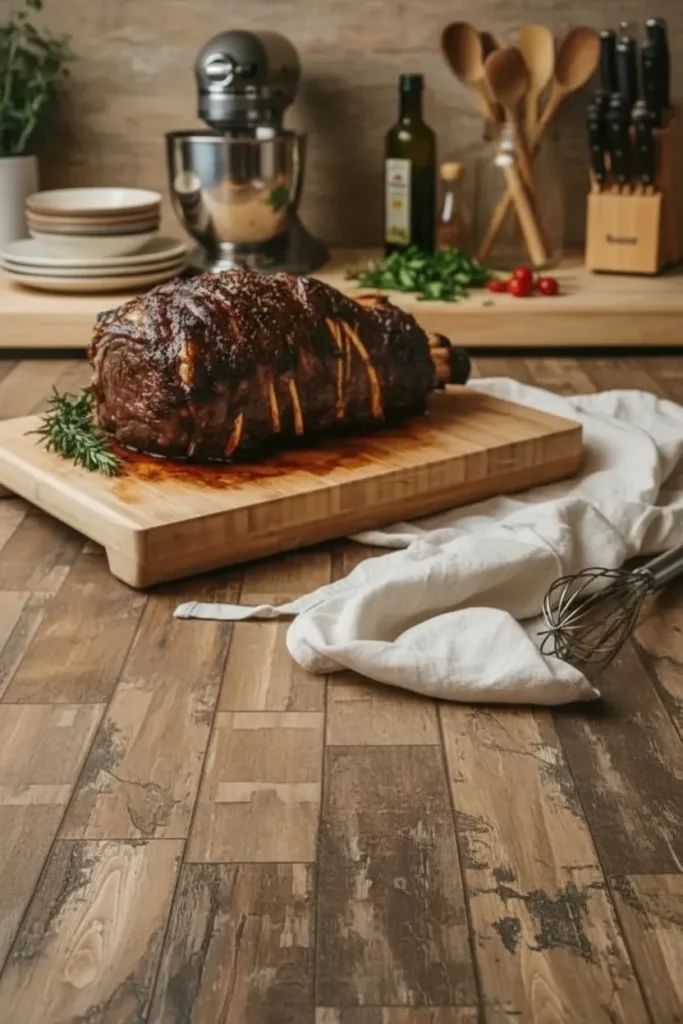
Classic Christmas Prime Rib: Frequently Asked Questions
What is the best way to season a classic Christmas prime rib?
The best way is to dry brine the prime rib with kosher salt at least 24 hours before roasting. This helps the seasoning penetrate deeply and enhances the meat’s natural flavors, resulting in a juicy and well-seasoned roast. Adding coarse black pepper just before cooking adds a crisp, flavorful crust.
How long should I cook a 6-pound prime rib for Christmas?
Cook the prime rib at a low temperature of 250°F (120°C) for about 3 hours. Use a meat thermometer to check for an internal temperature of 115°F for rare or 120°F for medium-rare. Rest the meat for 20-30 minutes after roasting to allow juices to redistribute before slicing.
Can I prepare the au jus in advance?
Yes, you can prepare the au jus broth ahead of time. After simmering beef bones, vegetables, and wine with beef stock, strain and refrigerate it. Reheat gently before serving to accompany your prime rib for rich, savory flavor enhancement.
What makes the horseradish sauce ideal for this roast?
The horseradish sauce combines tangy sour cream, sharp prepared horseradish, Dijon mustard, Worcestershire sauce, and mayonnaise, creating a creamy and spicy accompaniment that cuts through the richness of the prime rib perfectly, balancing flavors beautifully.
Conclusion
Classic Christmas Prime Rib is the ultimate centerpiece for a memorable holiday feast. By following simple yet crucial steps of dry brining, slow roasting, and preparing flavorful au jus and horseradish sauce, you can serve a tender, juicy roast with rich, complementary sauces that family and guests will adore. This recipe brings festive elegance and hearty warmth to your Christmas table, making every holiday gathering truly special. Start your tradition of serving this flavorful classic, and enjoy a wonderful feast full of joy and delicious memories.
